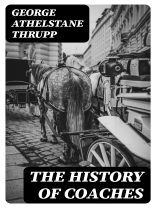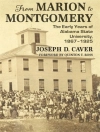In George Athelstane Thrupp’s ‚The History of Coaches‘, readers are taken on a literary journey through the evolution of transportation and the social implications of this advancement. Thrupp expertly weaves together historical facts along with vivid descriptions of the various types of coaches, giving readers a comprehensive understanding of this important mode of travel. Written in a clear and concise style, the book serves as a valuable resource for scholars and history enthusiasts interested in the development of transportation systems during the 19th century. George Athelstane Thrupp, a renowned historian and transportation expert, brings his expertise to ‚The History of Coaches‘. With a background in researching historical modes of transportation, Thrupp’s passion for the subject shines through in his meticulous attention to detail and thorough exploration of the topic. His authoritative voice and in-depth analysis make this book a must-read for anyone interested in the history of transportation. I highly recommend ‚The History of Coaches‘ to readers who enjoy delving into the intricacies of transportation history and the impact of technology on society. Thrupp’s insightful observations and engaging narrative style make this book an enlightening and engaging read for anyone interested in exploring the evolution of transportation systems.
Über den Autor
George Athelstane Thrupp (1822–1905) was a British historian and coachbuilder, who made a notable contribution to the historical study of horse-drawn vehicles with his seminal work ‚The History of Coaches‘ (1877). As a practitioner within the coachbuilding industry, Thrupp brought to his writing a practical understanding, enriching his scholarly pursuit with hands-on expertise. ‚The History of Coaches‘ explores the evolution of coachbuilding, offering readers a panoramic view of the historical and sociological implications of carriage development. It serves as an invaluable resource for enthusiasts and researchers alike, providing detailed descriptions, technical analysis, and cultural context. Thrupp’s meticulous approach to his subject matter reflects both his commitment to craftsmanship and his scholarly rigor. His work continues to be referenced in studies of transport history, making an enduring mark on his field. While ‚The History of Coaches‘ remains his most famous contribution, his literary style, often characterized by precise technical descriptions intertwined with narrative accounts, underscores the depth of his knowledge and his passion for the subject. Thrupp’s influence extends well beyond his era, and his legacy in the historiography of transport is of significant scholarly merit.












